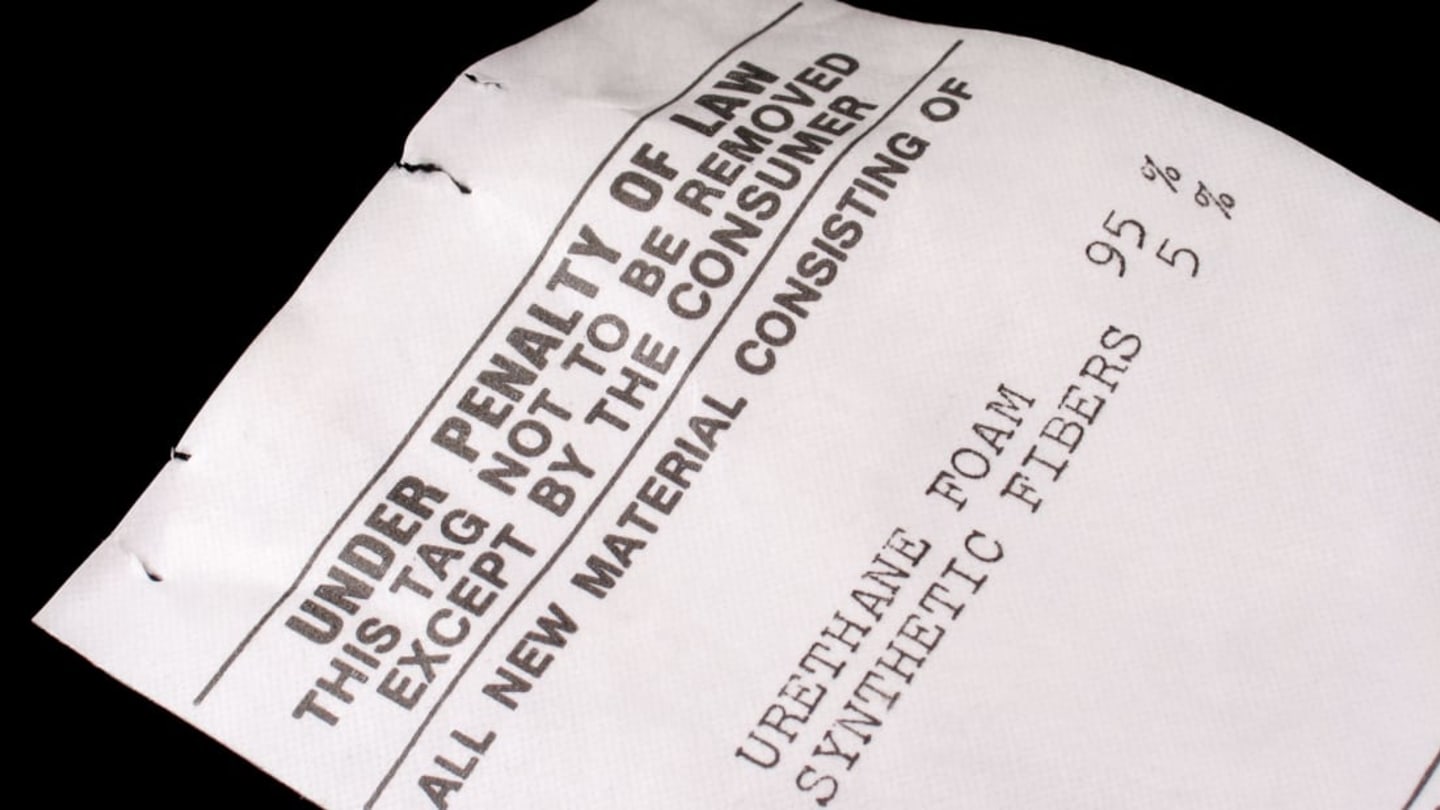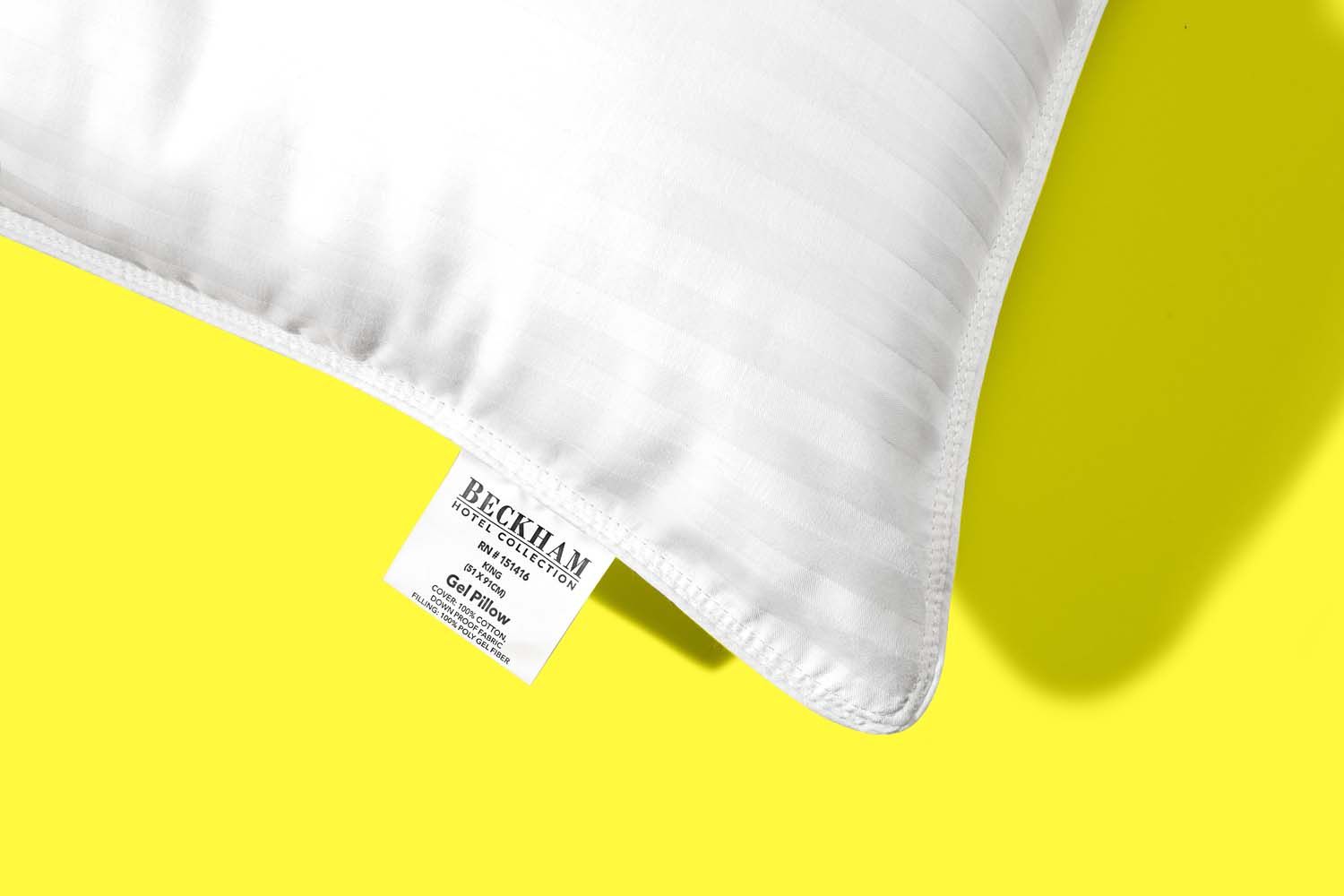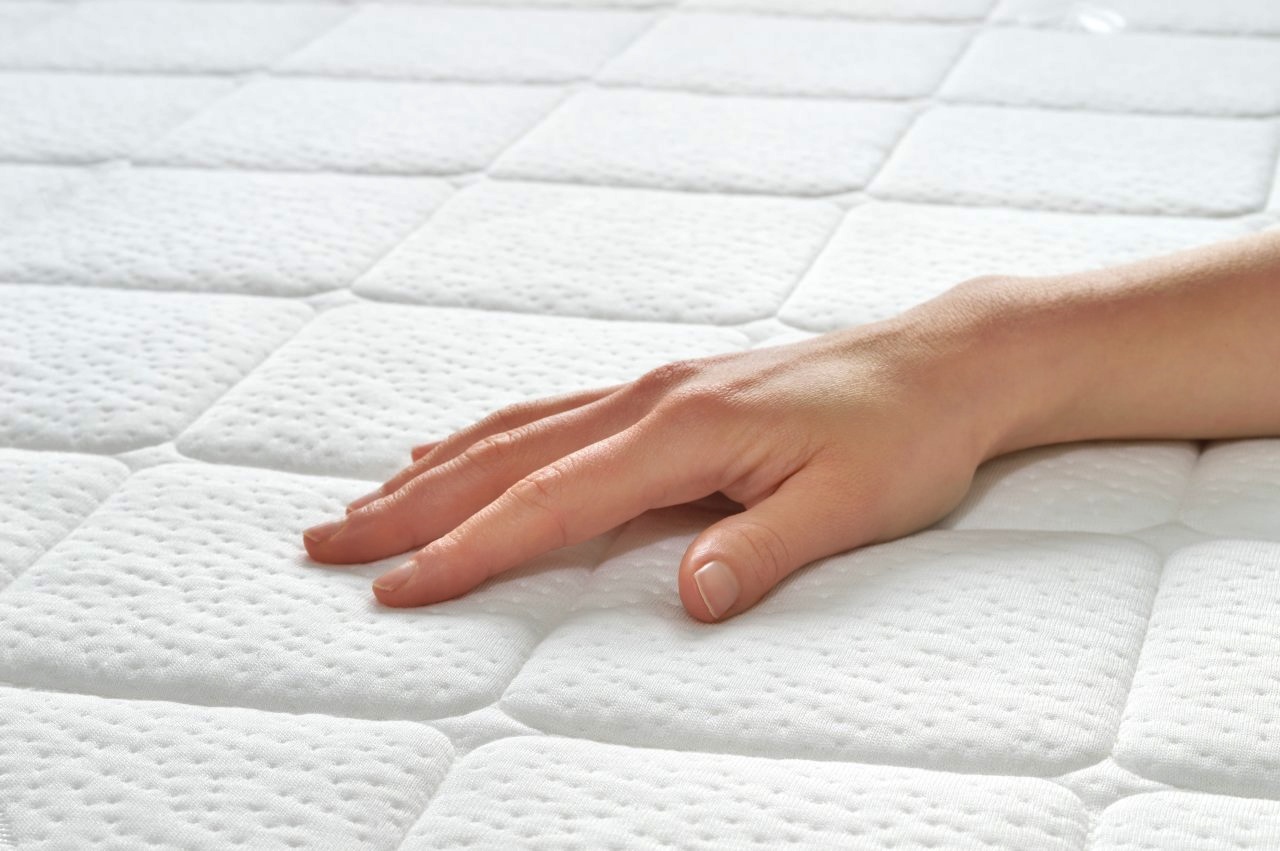Home>Furniture>Bedroom Furniture>Why Are Mattress Tags Illegal To Remove


Bedroom Furniture
Why Are Mattress Tags Illegal To Remove
Published: December 8, 2023
Discover the reasons why mattress tags are illegal to remove and how it relates to bedroom furniture. Uncover the truth behind this peculiar law.
(Many of the links in this article redirect to a specific reviewed product. Your purchase of these products through affiliate links helps to generate commission for Storables.com, at no extra cost. Learn more)
Introduction
Imagine you’ve just bought a brand-new mattress and it arrives at your doorstep, carefully packaged and ready to bring comfort to your bedroom. You eagerly unwrap it, excited to experience the blissful slumber it promises. But as you inspect the mattress, you notice a tag attached to it. The tag has various information printed on it, including those infamous words: “Do not remove under penalty of law.” So, what’s the deal with these mattress tags?
Mattress tags have long been a subject of curiosity and even confusion among consumers. Many people wonder why they are there and whether it is actually illegal to remove them. In this article, we will delve into the purpose of mattress tags, the regulations surrounding them, and debunk some common misconceptions.
Before we dive into the details, it’s important to understand that mattress tags serve a significant purpose, primarily related to consumer safety and product information. These tags provide key details about the mattress’s materials, manufacturing process, and compliance with industry standards. They ensure that consumers are well-informed about the product they are purchasing and help protect them from potential hazards or health risks.
The Federal Trade Commission (FTC) in the United States mandates specific regulations regarding the labeling and tagging of mattresses. These regulations are in place to ensure that consumers have access to accurate information about the product they are buying.
So, what happens if you remove that mattress tag? Is it really illegal? The short answer is no, it is not illegal for the consumer to remove the tag. However, the situation is a bit more nuanced than that. Let’s explore the regulations and penalties associated with mattress tag removal.
Key Takeaways:
- Mattress tags provide crucial information for consumer safety and product transparency, empowering buyers to make informed decisions and prioritize their well-being when purchasing a new mattress.
- While it’s not illegal for consumers to remove mattress tags, understanding the regulations and significance of these tags ensures transparency and accountability in the mattress industry, ultimately benefiting consumers.
Read more: Why Is It Illegal To Remove A Mattress Tag
The Purpose of Mattress Tags
Mattress tags serve several important purposes, all of which are aimed at ensuring consumer safety and providing vital product information. Let’s take a closer look at the main reasons why mattress tags are attached to these sleep surfaces.
1. Product Information: Mattress tags contain crucial information about the mattress, such as the manufacturer’s name, location, and contact details. They also provide details about the mattress’s size, model, and specifications, making it easier for consumers to identify the exact product they have purchased.
2. Compliance with Industry Standards: Mattress tags often include labels and certifications that indicate the mattress’s compliance with specific safety and quality standards. These certifications ensure that the mattress meets the necessary regulations and guidelines for fire safety, chemical composition, and overall product performance.
3. Material and Chemical Content: Mattress tags disclose important information about the materials used in the mattress construction. This includes details about the types of foams, fabrics, and other components present in the mattress. Additionally, the tag may indicate whether the mattress contains any chemicals or allergenic substances, helping individuals with sensitivities make informed decisions.
4. Product Care Instructions: Mattress tags often provide care instructions that help consumers prolong the lifespan of their mattresses. These instructions may include guidelines for cleaning, rotating, and maintaining the mattress to ensure optimal performance and durability.
5. Warranty Information: In some cases, mattress tags also include warranty details. This information outlines the terms and conditions of the warranty, such as the duration, coverage, and any specific actions or requirements for filing a warranty claim.
By providing all of this essential information, mattress tags empower consumers to make informed purchasing decisions. They ensure transparency and accountability in the mattress industry, enabling customers to understand the product they are buying, its quality, and potential allergens or safety hazards.
However, it’s important to note that while mattress tags are necessary for consumer awareness and protection, they do not need to remain on the mattress once it has been purchased. Once the mattress is in your possession, you are free to remove the tag without legal repercussions.
In the next section, we will explore the regulations enforced by the Federal Trade Commission (FTC) concerning mattress tags and the potential penalties for their removal.
Federal Trade Commission (FTC) Regulations
The Federal Trade Commission (FTC) plays a crucial role in enforcing regulations related to mattress tags and ensuring consumer protection. The FTC has established specific guidelines for manufacturers and retailers in the mattress industry to maintain transparency and provide accurate information to consumers.
One of the primary regulations set by the FTC is the Labeling and Advertising of Home Linens Rule. This rule requires that all mattresses sold in the United States must have a tag or label that includes certain essential information. The regulation aims to prevent deceptive practices in the industry and protect consumers from purchasing substandard or potentially unsafe products.
The key requirements outlined by the FTC for mattress labeling include:
- Identity of the Manufacturer: The mattress tag must include the name of the manufacturer, importer, or distributor, allowing consumers to identify the responsible party in case of any issues.
- Fiber Content: The tag should disclose the fiber content of the mattress materials. This includes information about the type of foam, fabric, or other components used in its construction.
- Country of Origin: The tag must indicate the country where the mattress was manufactured. This ensures transparency in the supply chain and enables consumers to make informed decisions about the origin of the product.
- Precautionary Statements: The FTC requires mattress tags to include any necessary warnings or cautionary statements related to the product’s safe usage, care, or health-related concerns.
These regulations are in place to protect consumers from false advertising, misleading claims, and potential health risks associated with mattresses. They give consumers the reassurance that the mattress they are purchasing meets certain standards and complies with industry regulations.
It’s worth noting that the responsibility for adhering to these regulations lies primarily with the manufacturers and retailers. As a consumer, while you should be aware of the information provided on the mattress tag, you are not legally bound to keep the tag on the mattress after purchase.
However, it’s always a good idea to preserve the tag for reference purposes, especially during the warranty period. The information on the tag can be helpful if you need to contact customer service or file a warranty claim.
Now that we understand the regulations surrounding mattress tags, let’s explore the potential penalties associated with removing or tampering with these tags in the next section.
Penalties for Removing Mattress Tags
Contrary to popular belief, as a consumer, you will not face any legal penalties for removing the tag from your mattress. It is not a crime to remove the tag once you have purchased the mattress and it is in your possession. The “Do not remove under penalty of law” statement on the tag primarily applies to retailers and manufacturers, not consumers.
The penalty prescribed by law is intended to discourage unscrupulous retailers and manufacturers from removing the tags before the sale. This is to prevent fraudulent activities, such as misrepresenting an old or used mattress as new or failing to provide accurate information to the consumer about the product’s origin and composition.
The penalties for retailers and manufacturers who remove mattress tags can be severe. Violators can face legal repercussions, including fines and other penalties imposed by the Federal Trade Commission (FTC) or other relevant regulatory bodies. These penalties are designed to enforce compliance with the labeling and advertising regulations set by the FTC, fostering transparency and protecting consumer rights.
It’s essential to note that the penalty for tag removal applies to those who engage in the act with the intent to deceive or defraud consumers. A consumer who inadvertently or mistakenly removes the tag from their own mattress does not fall within the scope of these penalties.
Therefore, as a consumer, you have the freedom to remove the mattress tag once you have purchased the product. The tag serves its purpose in informing you about important product details, but it is not necessary to keep it attached to the mattress after purchase. What matters most is your comfort and satisfaction with your new sleep surface.
Despite the lack of legal ramifications for removing the mattress tag, it is still advisable to hold onto the tag for a certain period. The information on the tag can be valuable for warranty claims or if you need to contact customer service for any reason regarding your mattress.”
Now that we’ve clarified the penalties associated with mattress tag removal, let’s shift our focus to the importance of these tags in terms of consumer protection and safety.
The “Do Not Remove” tag on mattresses is meant for manufacturers and retailers, not consumers. It’s legal for consumers to remove the tag once the mattress is purchased.
Consumer Protection and Safety
Mattress tags play a vital role in consumer protection and safety within the mattress industry. By providing detailed information about the mattress’s components, compliance with regulations, and care instructions, these tags empower consumers to make informed decisions and ensure their well-being. Here are some ways mattress tags contribute to consumer protection and safety:
1. Fire Safety Regulations: Mattress tags often include important information regarding fire safety standards. This information informs consumers whether the mattress meets specific flammability requirements, helping them choose products that prioritize safety in case of a fire. It enables consumers to have peace of mind, knowing that their mattress complies with the necessary regulations implemented to protect against fire hazards.
2. Allergen and Chemical Disclosure: Mattress tags may indicate whether the materials used in the mattress construction contain any potential allergens or harmful chemicals. This is particularly beneficial for individuals with allergies or sensitivities, as they can choose mattresses that are hypoallergenic or made with low VOC (volatile organic compound) materials. By disclosing these details, mattress tags ensure that consumers can make informed decisions about their health and well-being.
3. Proper Usage and Care Instructions: Mattress tags often provide care instructions, such as cleaning methods, maintenance routines, and recommended usage guidelines. These instructions assist consumers in properly caring for their mattresses, which can enhance durability and hygiene. Following the recommended instructions also helps prevent issues such as mattress sagging, mold growth, or odors, ensuring a safe and comfortable sleep environment.
4. Recalls and Safety Alerts: In some cases, mattress tags may include information about product recalls or safety alerts. This is valuable for consumers as it enables them to stay informed about any potential safety issues with their mattress. By being aware of any recall or alert, consumers can take appropriate action to ensure their safety and well-being.
Overall, mattress tags serve as a tool for consumer protection and safety. They provide valuable information that empowers individuals to make educated choices, mitigate potential hazards, and extend the longevity of their mattresses. While removing the mattress tag itself does not pose any safety risks, it is essential to refer to the information on the tag, especially when it comes to specific care instructions or safety guidelines.
Now, let’s address some of the common misconceptions surrounding mattress tags and shed some light on the truth behind them.
Read more: Why Is It Illegal To Cut Off Mattress Tags
Misconceptions about Mattress Tags
Mattress tags have been the subject of many misconceptions and myths over the years. Let’s take a closer look at some of the common misunderstandings surrounding mattress tags and separate fact from fiction:
1. Removing the Tag is Illegal for Consumers: One of the most prevalent misconceptions is that it is illegal for consumers to remove the mattress tag. In reality, the “Do not remove under penalty of law” statement primarily targets retailers and manufacturers to prevent fraudulent activities. Once you have purchased the mattress, you are free to remove the tag without facing any legal consequences as a consumer.
2. The Tag Must Remain Intact for Warranty Coverage: Another belief is that the mattress tag must remain on the mattress for the warranty to remain valid. However, warranty terms and conditions vary among manufacturers. While it is advisable to keep the tag in case you need to file a warranty claim, most manufacturers do not require the tag to be intact for warranty coverage. It’s essential to read the specific warranty details provided by the manufacturer to understand the requirements.
3. Mattress Tags Cannot be Reproduced: Mattress tags are often designed with special features, such as holograms, to prevent counterfeiting. However, this does not mean that the tags cannot be reproduced with the proper authorization from the manufacturer. The primary aim of these security features is to protect consumers from purchasing counterfeit or substandard products.
4. Removing the Tag Voidifies the Return Policy: Some consumers mistakenly believe that removing the mattress tag automatically voids the possibility of returning the product. In reality, most retailers’ return policies are based on factors such as the mattress’s condition and whether it meets the retailer’s guidelines. Removing the tag is not necessarily a determining factor in the return process. It’s always advisable to check the specific return policy of the retailer you purchased the mattress from.
5. Tags Provide Information About Mattress Comfort: While mattress tags provide valuable information about the mattress’s materials, certifications, and care instructions, they do not directly indicate the mattress’s comfort level. Comfort is subjective and can vary from person to person. It is recommended to try out the mattress in-store or rely on consumer reviews to gauge the comfort level that meets your personal preferences.
By debunking these misconceptions, we can understand the true purpose and significance of mattress tags. They serve as a source of valuable information, ensure transparency in the mattress industry, and empower consumers to make informed decisions based on their specific needs and preferences.
Now, let’s summarize the key points discussed in this article.
Conclusion
Mattress tags play a crucial role in the mattress industry, providing consumers with important information about the product they are purchasing. These tags serve to protect consumers, inform them about the mattress’s materials and certifications, and provide care instructions for optimal usage. While it is not illegal for consumers to remove the mattress tag, it is essential to understand the regulations and penalties that apply to retailers and manufacturers.
By adhering to Federal Trade Commission (FTC) regulations, mattress manufacturers and retailers ensure transparency and accountability in the industry. The “Do not remove under penalty of law” statement on mattress tags primarily applies to these industry professionals, aiming to prevent fraudulent practices and protect consumer rights.
Consumers can remove the mattress tag once they have purchased the product without legal consequences. However, it is advisable to keep the tag for reference, especially during the warranty period, as it contains valuable information that may be needed for warranty claims or customer service inquiries.
Mattress tags contribute to consumer protection and safety by providing information on fire safety standards, allergens or chemical content, proper care instructions, and recall alerts. They empower consumers to make informed decisions about their sleep surfaces, prioritize safety, and ensure the longevity of their mattresses.
Despite misconceptions surrounding mattress tags, such as their legality for consumers, their impact on warranty coverage, or their relationship with return policies, it is important to separate fact from fiction. Recognizing the true purpose and significance of mattress tags allows consumers to make educated choices based on accurate information.
In conclusion, while the infamous statement “Do not remove under penalty of law” may cause confusion, consumers can rest assured that removing the mattress tag is not illegal. Instead, focus on the valuable information provided by mattress tags to make informed decisions about your sleep surface and enjoy a comfortable and safe night’s sleep.
Frequently Asked Questions about Why Are Mattress Tags Illegal To Remove
Was this page helpful?
At Storables.com, we guarantee accurate and reliable information. Our content, validated by Expert Board Contributors, is crafted following stringent Editorial Policies. We're committed to providing you with well-researched, expert-backed insights for all your informational needs.














